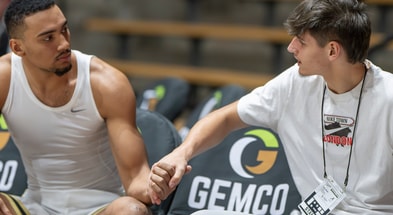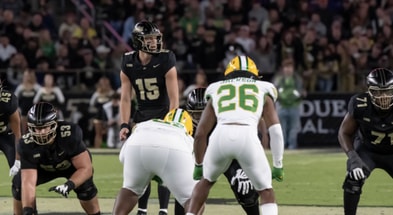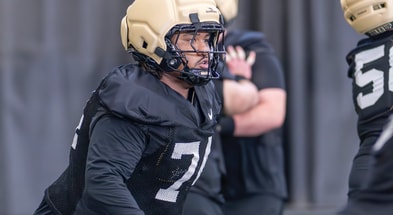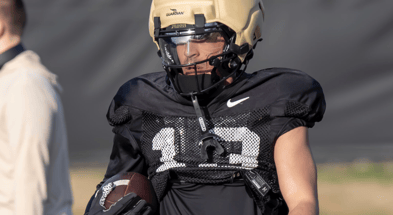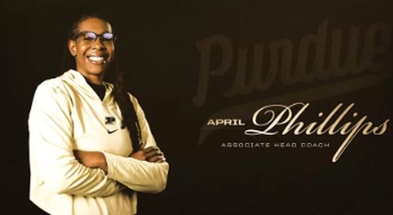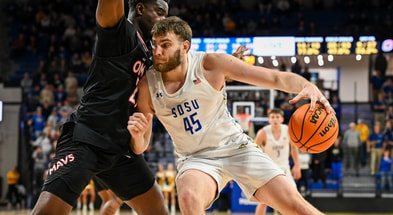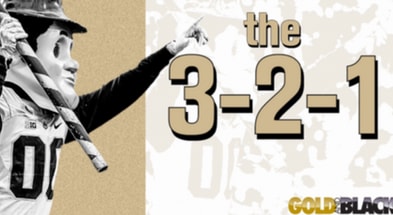Mailbag: Does Purdue have enough quickness?

Throughout the off-season, GoldandBlack.com will run its long-standing Purdue Basketball Mailbag series, taking reader questions in hopes of diving deeper into more off-the-radar sorts of topics.
Today’s topic: Quickness.
(Questions: DM @Brian_GoldandBlack.com or e-mail [email protected])
Q: Purdue isn’t a very quick team. How of being good enough defensively will depend on the young guards Omer, Harris and Cox? They will get less quick with Cluff I think but how good of a defender is he? Do you think quickness will limit the chances of winning the tournament?
Answer: Across the board, Purdue does not look like a terribly quick team, but its best player, Braden Smith, and that’s a big deal.

But I think there are also a couple of broad elements here that mitigate any deficit Purdue may have. And I don’t think Purdue is going to be a slow team across the board. I don’t know if quickness is going to end up being a weakness or just not a strength and there’s a big difference, and it’s not like you’re playing a bunch of teams that are rolling Jaden Ivey and Ja Morant out there against you? Who beat Purdue specifically with quickness this year? I’m not sure anyone really did. When Purdue was bad on defense, it was disjointed in what it was doing or it was turning the ball over. Wisconsin roasted Purdue, but Max Klesmit isn’t quick, and I wouldn’t call John Tonje quick either. That was all about spreading Purdue, disconnecting its help and riding a scorching shooting night.
But again, those mitigation elements …
The first is experience, as the faster someone processes things, anticipates and reacts, that’s a different kind of quickness. Nobody would classify Fletcher Loyer as quick, but very few people could keep him out of the lane when he drew and attacked closeouts. All of Purdue’s returning perimeter player have now played a good deal of college basketball and it should really show this season.
Second, size can be exposed by quickness but it also can stifle it, because all of a sudden those open areas you might want to attack are better occupied by someone with longer arms and better height. And you have a deterrent in the lane again, which is an antidote to quickness. Nothing bogs down an offense like a guard getting in the paint, getting stood up by a rim-protector, then trapped by a help defender. Purdue is better suited for that stuff now.
Top 10
- 1Breaking
College World Series
16 regional hosts announced
- 2New
Women's College World Series
Bracket is set
- 3Hot
Field of 64 projection
Championship Sunday Update
- 4
Tony Vitello
Karma strikes Vols
- 5
Sam Leavitt donation
$15K to Pat Tillman Foundation
Get the On3 Top 10 to your inbox every morning
By clicking "Subscribe to Newsletter", I agree to On3's Privacy Notice, Terms, and use of my personal information described therein.
Two relevant realities, too.
1. Purdue’s defense is built to help. It is like rolling the benefits of zone into man defense and with size in the mix now, my guess is you see very different outcomes. It’s really important for Purdue to do a good job staying in front of the ball on defense and part of that is quickness, but it did back off its full-court nuisance pressure some late in the season — a smart move, IMO — and those first-line defenders (CJ Cox and Gicarri Harris) will have much more able help behind them this season as long as people are disciplined in what Purdue is doing on D. Again, cognitive quickness via experienced should make better in help, better in rotations, etc.
2. They’re not going to beat people with quickness anyway. Most strengths come with trade-offs, and Purdue is going to be bigger and more skilled and certainly more experienced than most of its opponents, so there is no perfect team out there. It’s about amplifying strengths and muting weaknesses, and if quickness is a weakness, I think Purdue is well built to cover that up.
But we’ll see. Purdue has the whole off-season to figure out how to best put this roster in positions to succeed.
